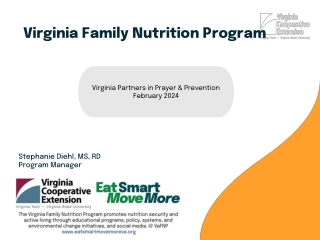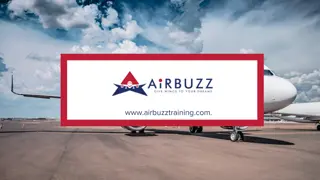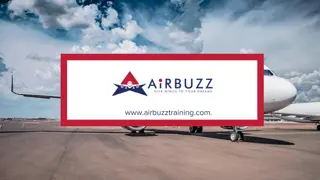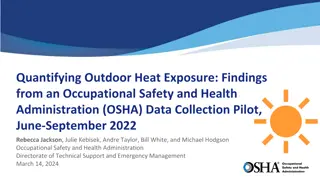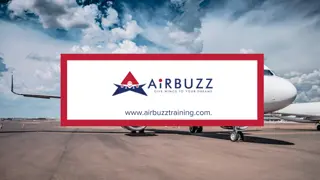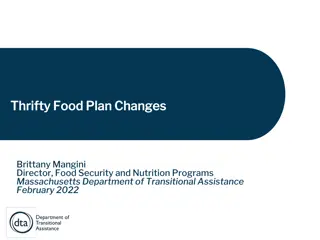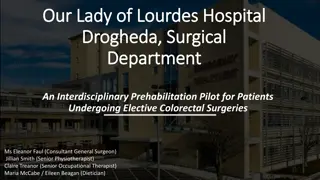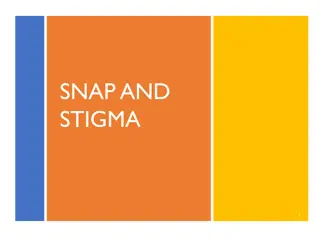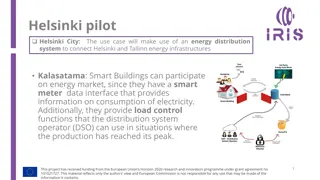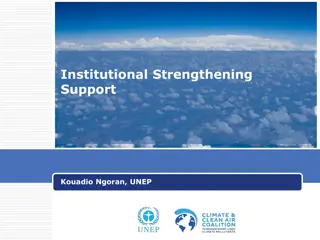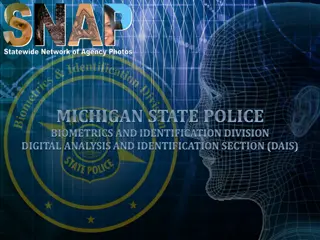
Vermont SNAP E&T Pilot Program for Employment Assistance
Vermont's SNAP Employment and Training (E&T) Pilot Program aims to assist participants facing significant barriers in securing employment and increasing wages. The program, funded under the Agricultural Act of 2014, focuses on individuals in Vermont with challenges like homelessness, addiction, mental health issues, and criminal records. The initiative includes support for at least 3,000 participants, with emphasis on Able-bodied Adults without Dependents (ABAWDs).
Download Presentation

Please find below an Image/Link to download the presentation.
The content on the website is provided AS IS for your information and personal use only. It may not be sold, licensed, or shared on other websites without obtaining consent from the author. If you encounter any issues during the download, it is possible that the publisher has removed the file from their server.
You are allowed to download the files provided on this website for personal or commercial use, subject to the condition that they are used lawfully. All files are the property of their respective owners.
The content on the website is provided AS IS for your information and personal use only. It may not be sold, licensed, or shared on other websites without obtaining consent from the author.
E N D
Presentation Transcript
1 Vermont s Supplemental Nutrition Assistance Program (SNAP) Employment and Training (E&T) Pilot A Pilot Program to Help SNAP Participants with Significant Barriers Obtain Employment and Increase Wages
2 Pilot Background The Agricultural Act of 2014 Set Aside $200 Million to be Used for SNAP E&T Pilots Statutory Goal: to test new methods for E&T programs and services to increase employment and earnings and reduce reliance on public benefits A maximum of 10 States received funding as determined through a competitive grant application process States/project areas awarded funding were: Vermont, Fresno County (CA), Delaware, Georgia, Illinois, Kansas, Kentucky, Mississippi, Virginia, and Washington. States awarded between $3.4 Million and $22.3 Million per pilot
3 Vermont s SNAP E&T Pilot Jobs for Independence (JFI) Focuses on individuals in Vermont with significant barriers to employment Homeless Vermonters with Addiction and/or Mental Health Issues Vermonters with Prior Criminal Convictions Participants Must be SNAP Recipients (who are not receiving TANF) with Mandatory Work Requirements A majority of individuals meeting this requirement are referred to as Able-bodied Adults without Dependents (ABAWDs) Pilot will seek to enroll at least 3,000 participants (with at least 1,500 in treatment group )
4 Target Populations in Vermont/Statistics Homelessness In 2014, over 1,500 Vermonters found to suffer from homelessness Prior Criminal Convictions In 2013, over 8,000 criminal offenders found to be participating in each of the following post-conviction correctional activities Re-entry Probation Parole Intermediate Sanctions Addiction/Mental Health Issues In 2013, over 9,000 Vermont adults were treated for substance abuse
5 Jobs for Independence -- Continued Vermont Will Receive $8.9 Million to be used for Pilot Services and Administration Pilot will Begin on March 7th and will last until December 2018. Pilot Monitoring and Evaluation to be Conducted by Mathematica Policy Research
6 JFI Partners and Stakeholders Department for Children and Families (DCF), Economic Services Division (ESD)- Anne McBee- Director, Tracy Collier-Program Manager, Jennifer Herwood- Data Manager Oversee implementation and administration of pilot Department of Disabilities, Aging, and Independent Living (DAIL), Division of Vocational Rehabilitation (VR) Perform comprehensive psychosocial assessment of pilot participants to determine a participant s individual employment needs Department of Labor Perform case management and service placement for pilot participants
7 JFI Partners and Stakeholders Cont. Community Action Agencies Targeted participant recruitment Community College of Vermont (CCV) Administration of Governor s Career Ready Certificate (GCRC) Program Other Non-Profit Training, Education, and Support Providers Recruitment and Retention Targeted employment support services
8 JFI Framework Recruitment Participant enrollment will be obtained through a combination of targeted recruitment and referral SNAP Eligibility Determination Those individuals meeting target population criteria and determined SNAP- eligible with mandatory work requirements will be referred for pilot Informed Consent/Random Assignment Random assignment to control or treatment groups Control Group Will receive current SNAP E&T services Treatment Group Will receive new and expanded SNAP E&T Pilot services
9 JFI Flowchart WALK-IN and ONLINE APPLICANTS RECRUITMENT Community Action Agencies SNAP Eligibility Determination ESD-BPS VDOL Orientation RANDOM ASSIGNMENT CONTROL GROUP TREATMENT GROUP Employment Assessment VR-EAP Counselors Services
10 Control Group Services Control Group Participants Will Be Placed in Vermont s Current SNAP E&T Program Administered by DOL Services Include: Vocational assessment Access to WIOA employment services as resources allow Monthly follow-up 90-day post-placement support
11 Treatment Group Services Individuals Will Participate in Inter-Agency Clinical Assessment to Determine Unique Barriers and Needs Case Management Services Provided by DOL Based on Clinical Assessment
12 Treatment Group Services -- Continued All Treatment Participants Will Have Access to Cross-Barrier Services or Universal Core Services Financial Literacy Training CCV s Governor s Career Ready Certificate (GCRC) Program Basic Education and Literacy/GED Completion Progressive Employment Services Direct Job Placements Apprenticeships On-the-Job Training Work Experiences with Training Allowance Company Tour and Job Shadows Temp-to-Hire Programs
13 Treatment Group Services -- Continued All Treatment Participants Will Also Have Access to Post- Employment Support Services Transportation Assistance Apprenticeship Tools Uniforms Reimbursement for Cost of Textbooks
14 Treatment Group Services -- Continued Targeted Services Will Be Available to Participants Assessed with a Corresponding Barrier Examples Include, But Are Not Limited To: Homelessness Rapid re-housing Housing search and placement Financial aid to prevent eviction Addiction/Mental Health Issues Recovery coaching Substance abuse outpatient services Criminal Convictions Fidelity Bonding
15 Desired Outcomes Once employed, at least 70% will retain their jobs for at least two quarters At least 50% will complete Governor s Career Ready Certificate (GCRC) Program At least 30% will complete industry recognized certification and training programs At least 40% will complete financial literacy training Increase in earnings post-Pilot compared to pre-Pilot wages Reduction in Pilot participants dependency on public assistance Increase in enrollment in post-secondary education and training post-Pilot compared to pre-pilot

